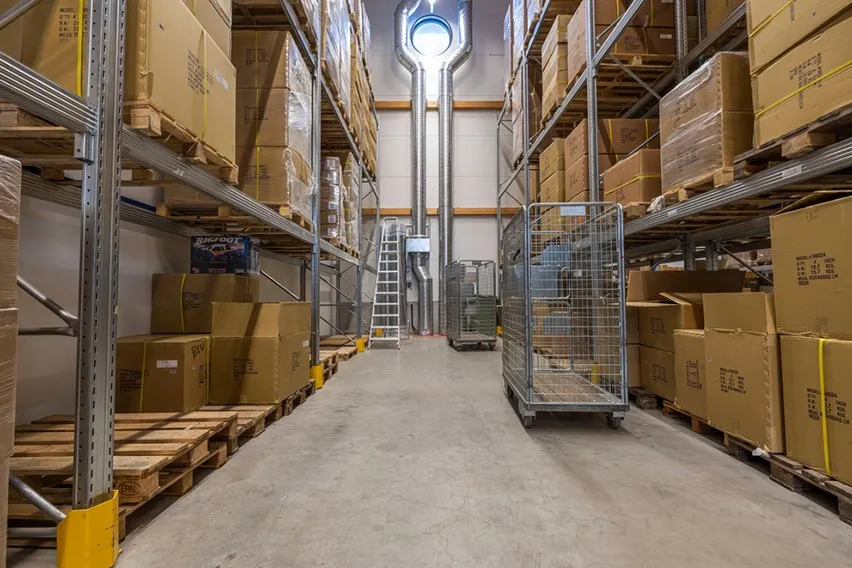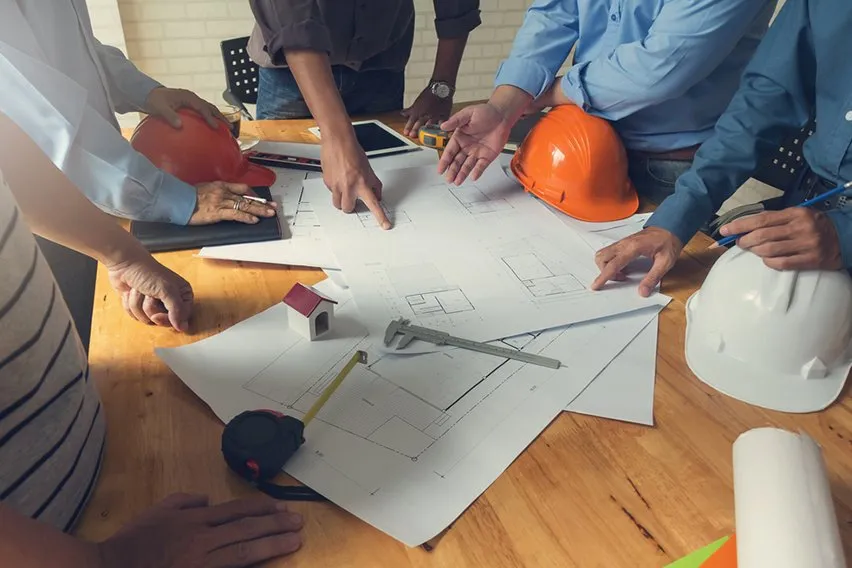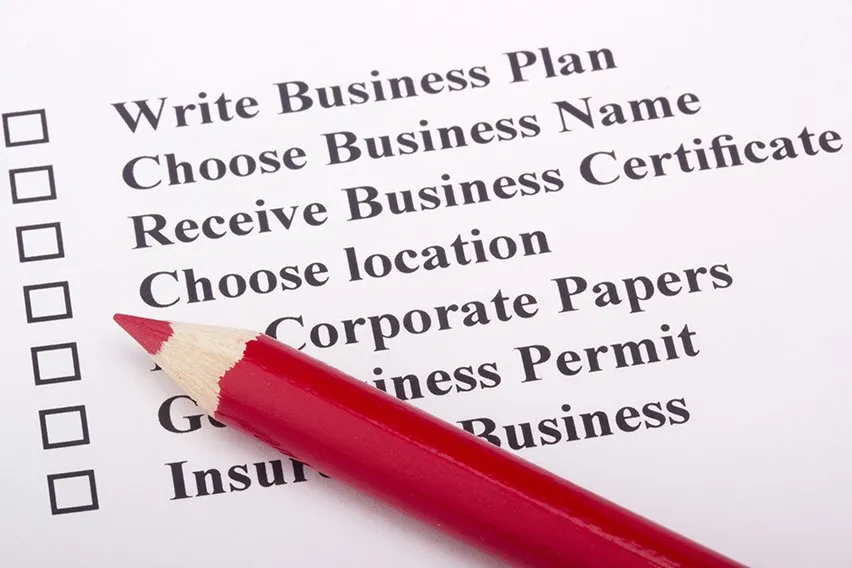How Much Does It Cost to Build a Warehouse?

How do you figure out how much it costs to build a warehouse? Here’s everything you need to help get started.
Are you looking into building a new warehouse and are exploring your options? There are a lot of different moving parts to consider when it comes to building a warehouse. But what’s the best way to figure out how much it will cost?
There are a couple of primary questions you should ask yourself before you move too far ahead. How big does your warehouse need to be? What types of items are going to be stored? Will it be an automated warehouse, a distribution center or a fulfillment center?
The type of warehouse that you’re going to build depends on what type of products you sell and how much inventory space you are going to require. That said, the basic costs to build a warehouse are going to be similar no matter the type. Some of those typical costs will include the material needed, electricity and windows.
Plus, you will also need to factor in things like racks, cabinets, plumbing and HVAC. Some of this can be outlined during the project development stage. Here is what you need to know for how much it costs to build a warehouse.
Here’s What We’ll Cover:
Factors to Consider Before Building
How Much Does It Cost to Build a Warehouse?
Factors to Consider Before Building
There are a few things that you are going to want to consider before starting to build your warehouse. Every warehouse is going to be different as they can serve different needs depending on the type of business you operate. But one of the main things to consider is your location.
The average cost of price per square foot to build a brand new warehouse is around $20. Now, the average price per square foot building will vary depending on where you live. You should also decide how big your warehouse is going to be.
Are you going to have a lot of inventory? Or will your warehouse act as a distribution or fulfillment center? Once you know how big your warehouse will be, you can start to look into the different kinds of material that you will need to build it. You can estimate the costs from the foundation all the way to the roof.

Here are some of the most common materials needed to build a new warehouse:
- Shelving
- Windows
- Doors
- Racks
- Cabinets
- Plumbing
- HVAC
- Electrical
How Much Does It Cost to Build a Warehouse?
It all depends on the size of the warehouse you are going to build and the different operational costs that you require. And depending on your location and industry, there might also be additional permits you will need to acquire. You can contact your local government or builders associations to inquire about any permits.
To help you figure out how much it would cost to build your warehouse, here are some areas to help get you started.
Different Types of Warehouses
There are different types of warehouses that you can build depending on your business needs.
- General warehouse. Good for storing any items or products that don’t require any type of climate control or specialized environment. A basic design that has the capacity for maximum efficiency.
- Automated warehouse. Fully automated robotic systems take care of all of your needs. Automated warehouses require heavy-duty flooring, distinct climate control and a dedicated IT infrastructure.
- Climate-controlled warehouse. Designed for items or products that need to be kept frozen or refrigerated. You will need to consider things like HVAC capabilities and insulated metal panels.
- Distribution center. A large quantity of inventory that will get distributed to other wholesalers or retailers. Good for order fulfillment and products are only stored for a limited time.
- Fulfillment center. Where things like online orders are processed, picked, packed and shipped. Some businesses outsource their storage and shipping needs to a fulfillment center.
Not every type of warehouse will be able to provide you with the capabilities and functionality that you need. Different business models will require a different type of warehouse.
How Big Should Your Warehouse Be?
Big? Small? Medium-sized? One of the first things that you are going to do when determining how much it costs to build a warehouse is to find out how much space you need. One of the first things you should consider is your SKUs, or stock keeping units.
How many products are you going to need to have in your inventory? Are you going to be adding new products regularly or just sticking with the ones you have already? Next, you should determine a few more details about your inventory. What is the maximum amount you will have on hand at one time? Is your warehouse space getting used in the most efficient way possible?
Knowing how much inventory space you will require will help you determine the size of your warehouse. After you determine the overall size, you can then start to figure out the layout of your warehouse. Try and determine where the most efficient locations will be for order processing.
When you know exactly how you are going to use your space, you can streamline your workflow.
Different Costs to Consider
As mentioned above, there are a ton of different building materials that get considered for the cost of construction. It all depends on the type of warehouse you are going to build and the industry that your business operates.
However, some materials are generally used throughout the construction of most warehouses. But materials will become more specific and specialized depending on the type of warehouse. Like if you build an automated warehouse compared to a general warehouse, for example.
- Metal: The cost of metal will vary depending on your location and the type of metal you require. The different types of metal can range from steel, aluminum or iron. Steel is typically the strongest and can withstand extreme weather and heavy loads.
- Fiberglass: Usually fairly cheap and simple to replace. Fiberglass can often get used for the roof and can allow natural light in.
- Wood: Often used for framing if steel studs aren’t used. Wood can also get used or build up different areas of the floor and other walled areas.
- Plastic: Can sometimes get used for the roof or even walls. Most often considered for different plumbing costs or forms of cladding on the exterior.

Understanding Your Needs in the Future
It can be crucial to be aware of any future considerations that might impact your operations. Are you planning on growing your business and might need to expand your warehouse a few years down the road? What about the loading docks? Do you have enough to accommodate the number of trucks that need to dock?
Maybe your current warehouse only needs to handle general needs. But what if you have plans to transform into a fully automated warehouse in the future? Be sure to think about the roof design and capacity for any additional equipment that might get added.
Being able to forecast your future demands will allow you to save money in the long run. Plus, you will be able to accommodate any changes, whether they are unexpected or not.
Key Takeaways
There’s a lot that goes into figuring out the cost to build a new warehouse. But, you now have all the information you need to get started. You have determined the type of warehouse you are going to build and the size it needs to be. Now, you can begin to figure out the costs of the materials needed.
Take a look into your business needs and overall objectives. For startups, these objectives invariably include efficient financial management, and considering accounting software for startups is a key part of that process. It can help you determine the number of materials you will require.
And since there aren’t any standard construction costs when it comes to building a warehouse, it can be beneficial to get a few different quotes. This way, you can compare prices and determine the best route to go. You can maximize your budget by knowing the exact costs and add even more value to your business operations.
Did you enjoy reading this guide? Head over to our resource hub for more!
RELATED ARTICLES


 5 Steps for Successfully Starting a Construction Company
5 Steps for Successfully Starting a Construction Company 5 Questions to Ask When Buying a Business
5 Questions to Ask When Buying a Business How Much Does It Cost to Open a Bar?
How Much Does It Cost to Open a Bar? Business Startup Checklist: A Small Business Guide
Business Startup Checklist: A Small Business Guide How to Get Government Contracts: Tips for Small Businesses
How to Get Government Contracts: Tips for Small Businesses How To Sell Products Online? An Extensive Guide
How To Sell Products Online? An Extensive Guide